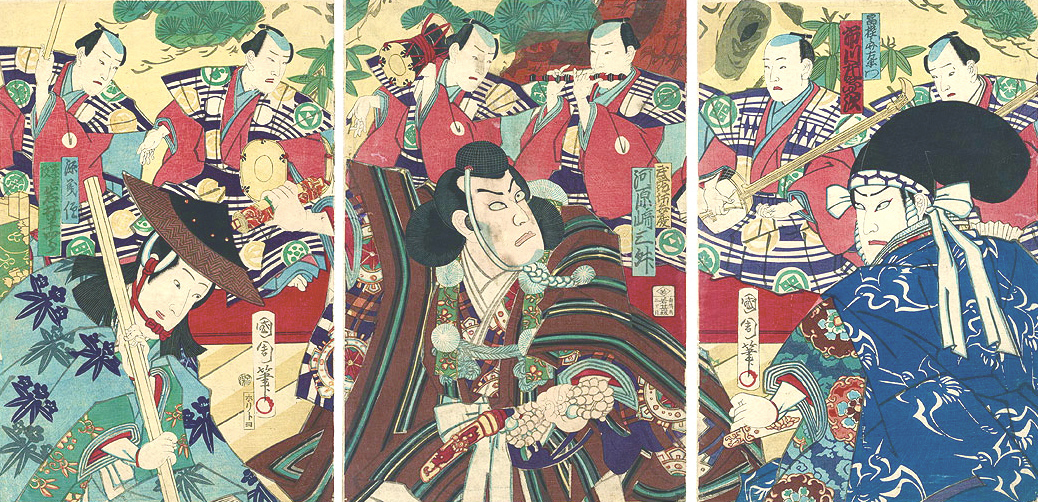The audience bursts into applause and a green-, black- and terracotta-striped curtain called the joshiki-maku comes down on a sparkling kabuki performance; rather, it's rapidly pulled across from stage left to right. But as everyone knows, it's not time to leave the auditorium, as what comes next is one of the highlights of the whole kabuki repertoire.
One character, Musashibo Benkei, a warrior-priest who is the star of the piece, remains standing outside the curtain at the end of the hanamichi walkway leading through the audience. The massive figure dressed as a yamabushi mountain ascetic shifts from pose to pose, expressing both great relief and great elation. Shouts of encouragement and excitement fly from the audience. And then the figure starts his famous hop-step-and-thump exit down the hanamichi — a finale known as tobi-roppo, literally "bounding in six directions."
This is the climax of "Kanjincho," one of the most popular kabuki plays in Japan and abroad. Based on a noh play titled "Ataka," the work presents an infamous scene featuring two superheroes of national folklore: Minamoto Yoshitsune and his sidekick, Benkei. It's all about feudal loyalty and two men who break the rules: Benkei for daring to strike his master to save his life by making him appear to be a lowly porter; and Togashi, the guardian of the Ataka Gate they wish to pass through, who rumbles the ruse but is so impressed by Benkei's absolute love for his master that he lets them through, thereby probably signing his own seppuku warrant.


















With your current subscription plan you can comment on stories. However, before writing your first comment, please create a display name in the Profile section of your subscriber account page.